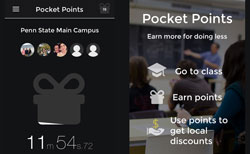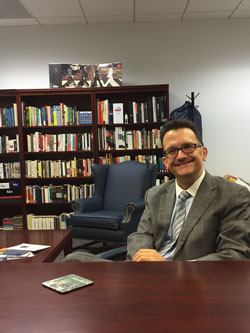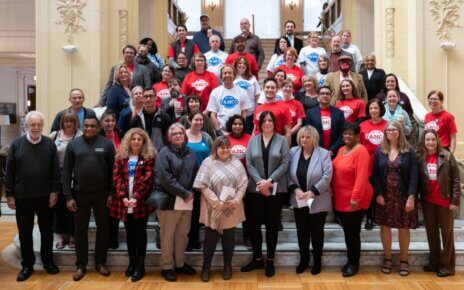A controversial debate surrounds student-athletes and whether or not they should receive wages. Last year, two suits were filed against the National Collegiate Athletic Association (NCAA) over compensating student-athletes.
A former University of South California football player opened a suit against the NCAA, alleging that student-athletes are employees who should be paid. In December, the NCAA asked the U.S. District Court in San Francisco to dismiss the lawsuit, stating that paying athletes “could jeopardize the long-term sustainability of college sports.” A decision by the Court has not yet been made.
In early 2016, former members of the University of Pennsylvania track and field team, opened a collective lawsuit against the NCAA and 123 of its member institutions, alleging that athletes at NCAA schools are actually “employees” of the schools for purposes of the Fair Labor Standards Act (FLSA), which would entitle them to minimum wages and overtime pay for all athletic activities. The suit was dismissed on Feb. 16, 2016 by the Federal District Court for the Southern District of Indiana.
“I think that student-athletes add immeasurably to the student life component. They are the students that are always on campus, weekdays through weekends and holiday periods,” said Dr. Marilyn McNeil, Vice President and Director of Athletics.
Like many other schools, the NCAA regulates the University’s athletic teams. The organization has 1,123 member colleges and universities, and generates about $1 billion in revenue per year, according to their site.
At the University, a noticeable uptick in athletics revenue was witnessed during the men’s basketball team’s recent two-year run of success. Last season’s ticket sales increased from $145,119.93 in the 2014-15 season, to $249,203.93 in the 2015-16 season, according to Jarred Wiess, Assistant Athletics Director/Business and Communications.
Although the basketball team and other athletics teams bring revenue to the University, there is still a deficit. According to McNeil the costs for running Division I men’s basketball program, for example, outweighs any of the revenue that is produced from their success.
“Salaries, benefits, facilities, operating costs such as travel, meals, hotels, transportation, recruitment, and scholarships all have significant costs and do not begin to meet the revenue that is produced,” McNeil said.
“Statistics would support that only about 30 schools nationwide do not have a deficit, and those are your big football schools. Football creates the revenue that allows a school, such as Ohio State, to support its entire athletics program. It is not the basketball program,” McNeil continued.
Claudia Lamarca, a senior midfielder on the women’s lacrosse team, acknowledges that there is a difference between athletes at the University and big name schools. “I think that the issue is completely different when talking about a school like Monmouth and a school like Duke. Those high major athletes bring in so much revenue for their schools in exchange for most times a free education, and so many perks to follow.”
Nevertheless, the opinions of athletes in regards to whether or not they feel they deserve wages vary.
Domenick D’Agostino, a senior distance runner on the men’s track & field team, said, “I don’t think that it is necessary. For me, being able to run in college is a privilege. Being a student-athlete is something that I have struggled with in the past and it is something that you figure out through time. Taking care of things at practice and getting schoolwork done are my top two priorities.”
Lamarca said, “I don’t think athletes should be compensated for their time because we knew what we were getting into before we did it — and we basically get to do what we love everyday. That doesn’t seem like a ‘job’ for me.”
Other student-athletes feel otherwise.
Chris Brady, a senior center on the men’s basketball team, said, “I do not have time to work. A part-time job would take away hours I spend in the gym focusing on my sport. There would also be an impact on my performance as a student and an athlete.”
According to Brady if it weren’t for him being a full scholarship athlete and receiving financial aid, he wouldn’t be able to afford to come to the University. He said, “I believe between the University and the NCAA, athletes should be paid since most don’t have time to be a student, athlete, and have a job.”
Antoniette Isekenegbe, a senior sprinter on the women’s track and field team, agrees with Brady. “That [wages] would be nice to have because, for an athlete, it is definitely a lot harder. I put in a lot of time as an athlete and I need to focus a lot of time to doing just one thing. It takes a lot of mental toughness to be a student-athlete and I find that being prepared ahead of time is the most important thing for me.”
Robert Scott III, an associate professor of economics and finance, said that University athletics scholarships are great since they can reduce or completely eliminate the cost of an education that a student may not be able to afford relieving them of debt when they graduate.
However, according to McNeil not all athletes receive enough scholarships for a full ride. For instance, the NCAA only allows 11.7 scholarships for baseball and at the University there are 35 student-athletes in baseball. Basketball, however, is fully funded at full rides for 13 male and 14 female basketball athletes.
“Some sports have many more team members than the amount of scholarship aid, which means that not all student-athletes receive athletics aid,” said McNeil.
To pay for extra expenses some athletes receive full rides as well as additional aid for the cost of attendance, or fees that go beyond the typical full ride, according to McNeil. However, she believes that additional aid should be granted on a case-by-case basis.
“Our conference, the Metro Atlantic Athletic Conference (MAAC), agreed to give this additional aid to our basketball athletes only. I agree that some of the student-athletes really do need this additional aid, as they have no other sources of support; however, I do not think all of the student-athletes are in this category. I would prefer giving aid above a full grant in aid, based on need only,” she said.
With these varying opinions, and recent suits it seems as though the debate around paying student-athletes is far from over.
Additional reporting done by John Sorce, Co-Senior/Sports Editor



